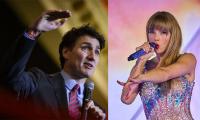May 21, 2016 marks the 65th anniversary of the establishment of diplomatic relations between China and Pakistan, but in essence it marks a defining moment not only in our relationship but also a milestone in the economic and cultural development of the entire region. What started as a formal establishment of diplomatic relations in 1951 has, by 2016, become an unbreakable bond of infallible trust, time-tested friendship, and above all a shared world-view.
It’s the norm for members of the global community to enter into bilateral diplomatic, trade, commercial, military etc., relations, but in all honesty, how many examples are there in the contemporary history where two nations become inseparable in shared values, interests, and a global outlook. Over the decades, leaders and governments have changed in Beijing and Islamabad, but not this bond. Both countries have fought their own battles but stand shoulder to shoulder, whether in the noisy battlefields or equally treacherous corridors of international power centres.
Intriguingly, the two people spoke entirely different languages, lived in their own unique cultures, and till recently there was little direct people-to-people interaction and yet no one could ever explain the immense reservoir of love the people bore for one another. What an amazing relationship. This explains why this relationship continues to be consistent, predictable and growing.
Unfortunately, despite our mutual trust, emotional and geographical closeness and myriad other advantages, we have not been able to fully exploit the commercial and development potential of our relationship. It has been good, but it should have been great. We have walked together for 65 years now, and should have travelled much farther than we actually did. Greater progress and mutual development should have been harvested, but it’s never too late. And I for one see 2016 as being that beautiful watershed in the mutual economic and global progress and development of the two brotherly countries.
We need to redress this unwarranted disconnect between the political goodwill and economic reality of our relations. Despite geographical proximity, our bilateral trade still hovers around $10.6 billion – far below the actual potential.
In today’s world, the economic aspect of inter-state relations assumes a critical priority. It is indeed a strategic imperative that guarantees longevity and sustainability of relations between countries. China and Pakistan also need to keep economic-diplomacy at the core of their relationship and aim for even greater trade and economic partnerships.
The world has dubbed the 21st century as the ‘Asian Century’. There is now a discernible shift of balance of political and economic power from the West to the East. From being a regional superpower, China is now both respected and ‘feared’ by many as the new emerging global superpower. Pakistan looks at the peaceful rise of China as a source of strength and stability for the southwest, Central Asian and Asian regions.
Despite being a different country in size with different socio-political system, China continues to be a model country for Pakistan. First, China is a leading country from the developing world that successfully lifted its 700 million people from poverty through prudent policies and reforms. The Chinese experiment of rendering its huge population into demographic dividend is an example of how skilled human resource can be leveraged as a factor of development.
Secondly, in line with the Five Principles of Peaceful Co-existence introduced by Premier Zhou Enlai, Chinese foreign policy has been subject to the imperatives of economic development and stability. China is a rare example, in that it emerged peacefully on the world scene by employing soft – rather than hard – power. Regional harmony is a central pillar of China’s foreign policy.
This is why President Xi Jinping’s ‘One Belt, One Road’ vision is so central to peaceful and prosperous regional integration. The China-Pakistan Economic Corridor (CPEC) affords us a rare opportunity to bridge the deficit between our political goodwill and economic relations.
The imperatives of economy and energy that form the pillars of the ‘One Belt, One Road’ vision, and by extension the CPEC, are blazing new trails. Through these initiatives, the broad contours of ‘Greater South Asia’ are emerging, which include not just the geographically slotted subcontinental countries but also a broader region populated by China, Afghanistan, and Iran etc. Pakistan’s membership of the SCO has further brought this fact closer to home and is testimony to its potential of becoming a reality. The CPEC is bound to prove a game changer for us, and it is incumbent upon us to unleash its immense potential to further strengthen this win-win partnership.
Today’s world is all about harnessing economic potential and forming mutually beneficial economic partnerships. Countries are increasingly using political goodwill to cement and expand their economic ties. While, strictly speaking, we may still be living in a unipolar world but for all intents and purposes, various multilateral economic groupings have emerged as strong alternatives to today’s functional but hardly perfect global political and economic architecture.
There is a genuine need for a renewed push for regionalism and multilateralism. I have no doubt that by virtue of its size and economic power, China is uniquely positioned to lead the developing world and strengthen regional integration. South-south cooperation, a theme resonating across the developing world, acquires a new meaning in the current geo-strategic environment.
President Xi Jinping’s ‘One Road, One Belt’ initiative has all the attributes of binding the South and Central Asian region into a well-knit robust economic block. It can also serve as a basis for durable peace in the region and beyond, by replacing animosity with cooperation among the member countries. I would not be wrong to say that President Xi’s vision is one of development, progress and prosperity. It is the harbinger of a new era of peace and stability, offering the promise of transforming the regional economic landscape.
The Chinese commitment to invest $46 billion in Pakistan through the CPEC projects will be transformational in reshaping the destiny of Pakistan, as well as the region. Both countries are determined to work together to achieve the common destiny of shared dreams as envisaged by President Xi Jinping and Prime Minister Nawaz Sharif.
China and Pakistan have a tryst with a shared destiny. Our bonds go beyond a mere six decade long diplomatic document. We have been together for almost 2500 years – when Taxila, the centre of Buddhism, was the home to the world’s first Buddhist university. And then there was our magical Silk Route, which served as a bridge between China and the world for commerce.
China and Pakistan have a shared history of intellectual and economic growth. Two people bound by bonds of friendship and trust. We have been great together for the past 2500 years, and indeed the next 2500 will be even better.
The writer is the chief minister of Punjab. Facebook: facebook.com/
shehbazsharif
Twitter: @CMShehbaz
Economic nationalism remains potent political narrative, influencing both Republican and Democratic platforms
Yes, blockchain, decentralised and distributed ledger technology, is foundational backbone of cryptocurrencies
Blue carbon covers merely 2.0 per cent of ocean surface but absorbs 50 per cent of carbon dioxide
During WWII, Japan’s economy and national morale were plummeted by its doomed alliance with Germany
More than 40 persons, including women and children, were killed in Parachinar
After November 30, it will be impossible for ordinary internet users to access all banned websites, including X







